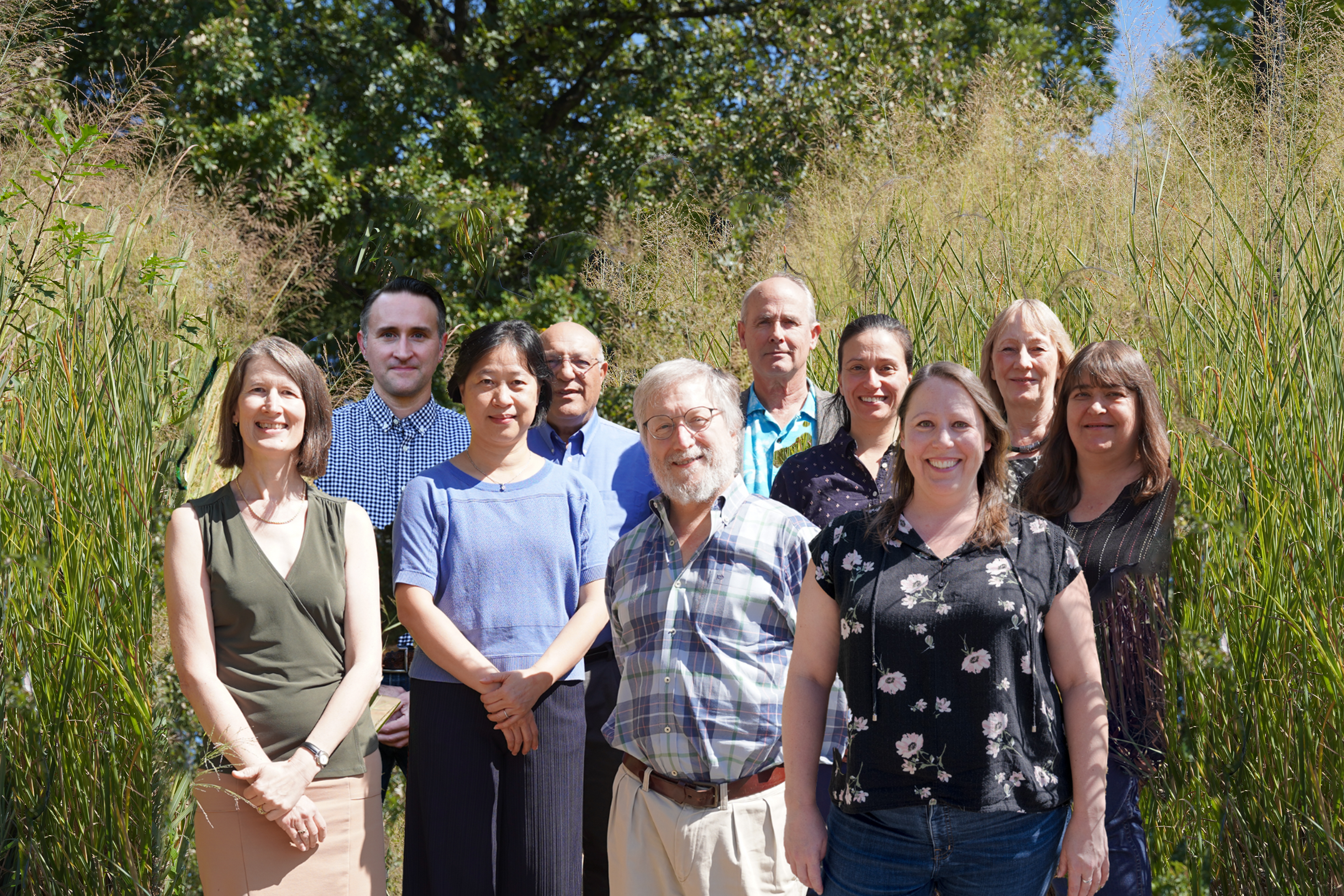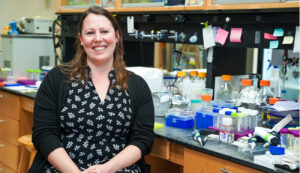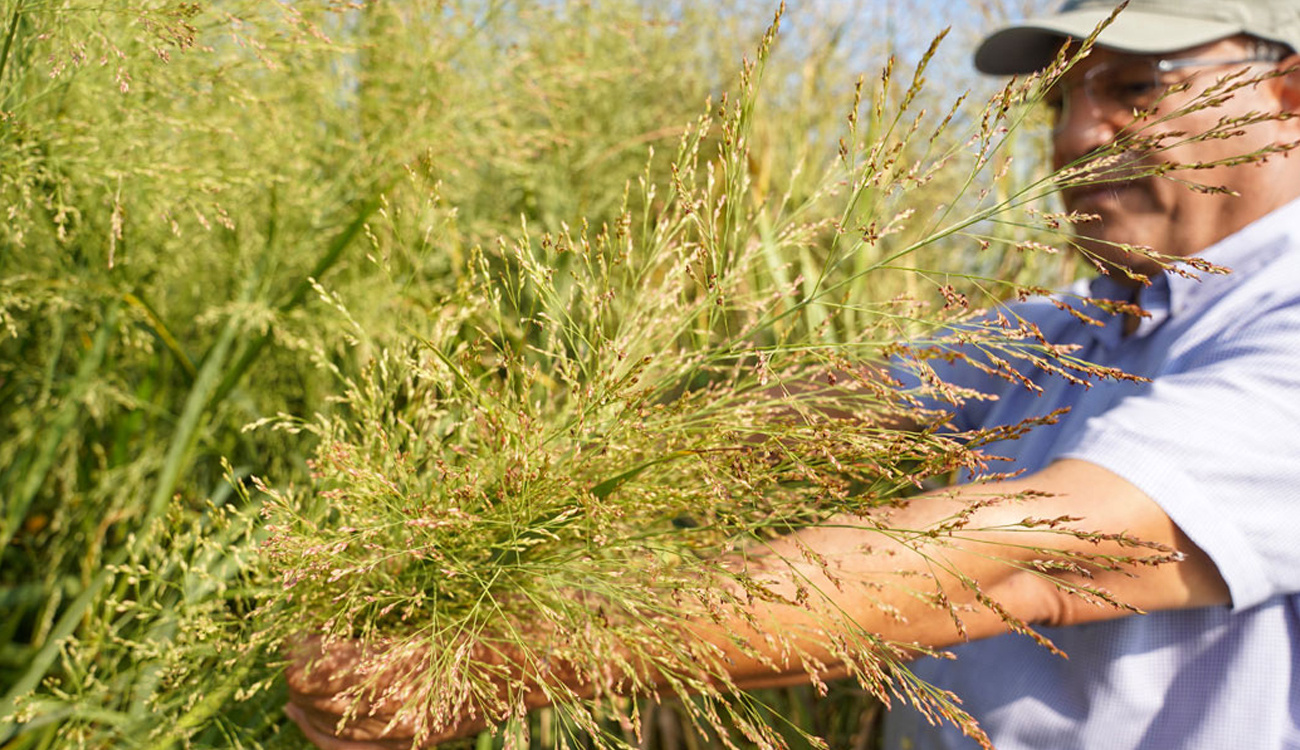As the world grapples with how to reduce its carbon footprint, it’s clear there’s no silver bullet solution for climate change. It will take a multifaceted approach to scale back fossil fuel usage and find more sustainable alternatives.
Several UGA researchers are working on promising pathways like bioenergy and bioproducts, forms of renewable energy and materials that could curb carbon emissions.
“Bioenergy is essential if we want to move into a sustainable society and reduce or eliminate our use of fossil fuels,” said Debra Mohnen, Distinguished Research Professor and Georgia Athletic Association Professor in Biochemistry & Molecular Biology, and research domain manager for Oak Ridge National Laboratory’s Center for Bioenergy Innovation(CBI).

Bioenergy is a form of renewable energy derived from biomass, which encompasses any living organism, including plants, trees and animal waste. It poses immense promise in revolutionizing transportation fuel, heat, electricity and as a substitute for petroleum-based products like plastics and paints.
But there are real challenges to realizing its potential. Much of it boils down to cost and efficiency.
“Certain biofuels are not always the most cost-effective operation,” said Robin Buell, Georgia Research Alliance Eminent Scholar Chair in Crop Genomics at the Center for Applied Genetic Technologies in the College of Agricultural and Environmental Sciences. “You have to reinvent bioenergy so that the economics are driving it.”
To advance bioenergy, there’s a need to find the right sources of biomass, produce a high yield and identify the best biological pathways to convert it into bioenergy and bioproducts.
At CBI, a multidisciplinary center headquartered at Oak Ridge National Laboratory and supported by the U.S. Department of Energy (DOE), UGA researchers who specialize in production of plant-based fuels and chemicals are joined by experts across campus to position UGA as a leader working to accelerate the adoption of bioenergy worldwide.
Breeding them bigger
Maximizing crops’ biomass is a critical piece of the bioenergy puzzle.
Biomass needs to be able to grow on marginal land not being used for other forms of agriculture, so it doesn’t compete with food agriculture. Crops also need to produce high yields of biomass to make it a cost-effective endeavor for both farmers and the renewable energy industry.
Poplar and switchgrass are two of the most promising feedstocks for bioenergy, and UGA researchers are investigating ways to help both reach their potential.
“Poplars are one of the fastest growing trees and they offer a carbon sequestration benefit,” said Buell, who specializes in developing methods to change a plant’s architecture for bioenergy use. This can include genetic modifications like getting a plant or tree to grow taller and in more compact formations, so farmers can get higher yields from the same acreage.
One of Buell’s current projects focuses on reengineering poplars to produce varying amounts of leaves and wood to maximize the biomass of each tree. Poplar leaves can be utilized in sustainable aviation fuel (SAF), and the wood and branches can replace other petroleum-based materials, like paint. The project recently received $15.8 million in support from the Department of Energy.

Buell likened the progress she and other researchers have made in genetic engineering of plants to advances in surgical methods—undergoing an operation in 1923 was very different than the techniques you’d encounter in an operating room today.
“We’re modifying genes with so much precision that we can control very specific cell types, under certain conditions, so that we can engineer entirely new plants to fit different bioenergy needs,” Buell explained.
CJ Tsai, Winfred N. “Hank” Haynes Professor and Georgia Research Alliance Eminent Scholar, also works with poplars and other trees, specializing in using approaches like the CRISPR gene-editing tool. She recently developed a method that drastically reduces the time it takes a poplar tree to flower, from about seven to 10 years to just a few months. This enables scientists to improve the efficiency of a poplar’s breeding cycle and target specific traits that will optimize poplars for bioenergy feedstock crops, including cold and drought tolerance.
“We need bioenergy feedstock species that will be resilient to climate change, able to tolerate different stresses and able to grow on marginal land,” Tsai said.
Plant energy = unlocked
Extracting the right organic material—and enough of it—from each feedstock is another challenge.
Plants like corn are among the most straightforward to work with because they’re made of starch, which is easily broken down into sugar and fermented into liquid fuel. Other plants and biomass aren’t quite as simple.
The key to getting the most energy out of biomass is unlocking the highest volume of carbohydrates from the plant, tree or other organic material in order to break them down into sugars and convert into bioenergy.

“Every single plant cell is surrounded by a cell wall, which is rich in carbohydrates,” said Breanna Urbanowicz, assistant professor in the Franklin College of Arts and Sciences Department of Biochemistry and Molecular Biology.
Urbanowicz specializes in understanding the biological makeup of plants. She develops better methods to alter the cell wall structure for use in bioproducts.
Urbanowicz just received funding from the DOE to apply her expertise to duckweed, an emerging bioenergy feedstock that can grow in aquatic areas and is one of the fastest growing plants.
Urbanowicz, like Mohnen, is a researcher in UGA’s Complex Carbohydrate Research Center (CCRC), one of the world’s leading destinations for the study of carbohydrate science. Mohnen focuses on pectin, a gelling agent in the cell wall that’s known for its role in holding jams and jellies together. But the same property that makes it great for grape jelly is less helpful when it comes to extracting sugars because it binds carbohydrates to the cell wall.
“We’re working to make it easier to open the cell wall and deconstruct it,” Mohnen explained. “Improving this process could increase the yield of biomass in switchgrass sixfold and produce similar results in other biomass.”
“We’re modifying genes with so much precision that we can control very specific cell types, under certain conditions, so that we can engineer entirely new plants to fit different bioenergy needs.”
– Robin Buell, Georgia Research Alliance Eminent Scholar Chair in Crop Genomics at the Center for Applied Genetic Technologies in the College of Agricultural and Environmental Sciences
(Photo by Andrew Davis Tucker)
Tiny organic explosions
Once biomass is produced and optimized for biofuel, it is still challenging to use for transportation, which accounted for around one-third of carbon emissions in the U.S. last year. Any fuel, bio- or otherwise, must be understood for its chemical reactivity so it can be incorporated into mainstream fuel supplies.
This is Brandon Rotavera’s specialty. In his lab, the associate professor with a joint appointment in the College of Engineering and Franklin’s Department of Chemistry focus on combustion and how to increase fuel efficiency and decrease emissions through the combustion process. He aims to understand the chemistry underlying combustion in biofuels, petroleum-based fuels and blends of both. It’s important to focus on all fuel options, he explained, since petroleum-based fuel isn’t going anywhere anytime soon. Emissions, however, could be reduced with improvements.

“We don’t need biofuels to deliver a one-to-one fuel replacement to achieve the efficiency goals that will make a difference with carbon emissions,” Rotavera said. “The combined approach of advanced combustion strategies and new, advanced biofuels can enable more efficient, cleaner-burning combustion systems.”
Rotavera develops and models new combustion strategies that operate at lower temperatures, use less fuel and produce fewer pollutants. His research could empower the transportation sector to reduce their carbon footprint through more efficient combustion engines that support different biofuels.
His lab works to understand how different molecular components of biofuels affect the combustion process through reaction mechanisms, ignition chemistry and pollutant formation. Using sophisticated computational modeling and simulation, he investigates how the chemical reactions of different biofuels can advance more sustainable energy goals.
While there’s momentum for electric vehicles to put a dent in carbon emissions, that won’t be enough, Rotavera said. Certain modes of transportation—like airplanes and shipping vessels—can’t be electrified.
“We still need to find ways to make liquid transportation fuels because there is no good alternative right now to replace 100% of liquid fuels,” Mohnen added.
Flying the ecofriendly skies
By the same token, aviation is one of the best opportunities for carbon reduction. Almost all carbon from the aviation industry comes from the use of petroleum-based fuel, which means swapping plant-based SAF for traditional fuels could make a huge difference.

In fact, if planes were powered solely by SAF, carbon emissions from air travel could be reduced by as much as 68%, according to a 2021 study from Puneet Dwivedi, associate professor in the Warnell School of Forestry & Natural Resources.
Dwivedi looked specifically at fuel derived from Brassica carinata, a type of mustard plant whose seeds can be ground and refined into oil. Carinata offers many benefits as a form of biomass: It can be grown in winter, so it doesn’t compete with other crops, and it provides nutrients that can be tilled into and recharge the soil. It also becomes part of the natural carbon cycle as it consumes the carbon it releases into the atmosphere during subsequent growing seasons.
Dwivedi performed a technological and economic analysis to examine the cost and carbon impact of supplementing petroleum-based jet fuel with SAF derived from carinata. He found it would break even on the cost side of things—and lead to huge reductions in carbon emissions.
Carinata is just one of many forms of biomass that could be converted into SAF. Other sources include oil seeds, agricultural residue and wood mill waste.
“Our results would be especially relevant to the state of Georgia, which is the sixth-largest consumer of conventional aviation fuel in the country, hosts the busiest airport in the world and is home to Delta Air Lines, a leading global airline company,” Dwivedi said. “Carinata has the potential to be a win-win situation for our rural areas, the aviation industry and, most importantly, climate change.”
The federal government has identified the airline industry as a target for reducing carbon output and has set goals to power 2% of aviation with biofuels by 2025 and 63% by 2050.
Those aren’t pie-in-the-sky numbers, Mohnen said. The U.S. is currently growing about 365 million tons of biomass a year and has the capacity to grow a billion (or more).
“The Department of Energy calculated that the US has the potential to produce a billion tons of biomass a year,” she said. “That’s enough to produce 50-60 billion gallons of low-carbon biofuels and put a real dent in our carbon footprint.”







